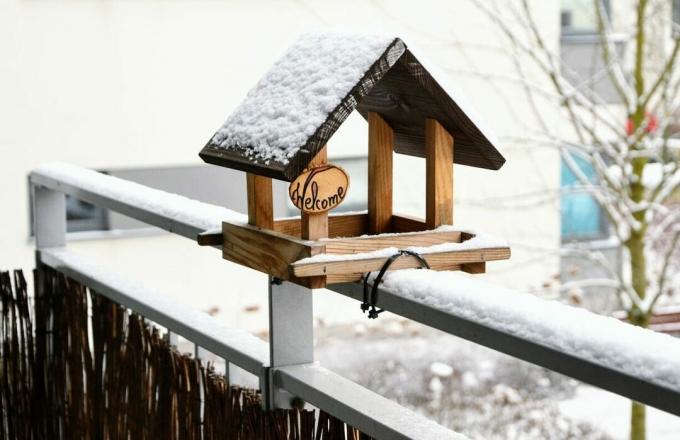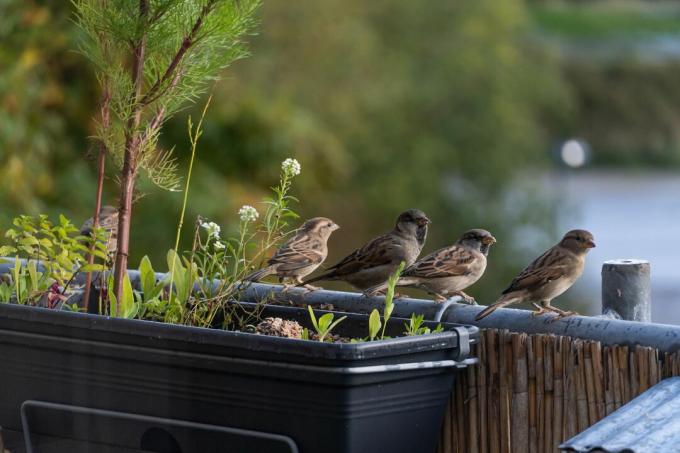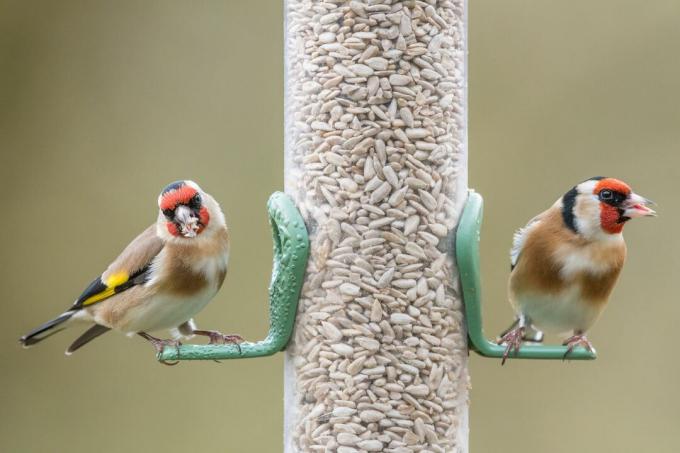Birds enjoy food not only in the garden, but also on the balcony. But what should you watch out for when spreading birdseed on the balcony? And how do you do this without dirt? You can find all the important tips below.

You don't always need a large garden to bring a little piece of nature into your home. Even on a balcony you can surround yourself with plants, sow vegetables and even attract small pollinators and other animal visitors. Garden birds can also become balcony birds if they are offered a safe environment and a species-appropriate feeding place. What you need to know about bird feeding on the balcony, how to avoid unnecessary dirt and what time of the year you should feed, you can find out here in our information article.
"Contents"
- Feeding birds on the balcony: this is what you should pay attention to
- This is how you can feed birds on the balcony without dirt
- Feeding birds on the balcony: even in summer?
Feeding birds on the balcony: this is what you should pay attention to
Feeding songbirds on the balcony is also legally permitted in rented apartments and therefore especially in urban areas a welcome support for wild birds that fight in cities and settlements for the few food grounds have to. However, to be considerate of your neighbors and the landlord, consider installing a Make sure that there is no unnecessary dirt or dirt on neighboring balconies is blown.
However, feeding street pigeons is often forbidden because the birds appear in large numbers in cities and can produce a lot of rubbish. To keep street pigeons away, you can, for example, install special feeding places that only have small openings for Have songbirds, or offer hanging food cakes and tit dumplings that the pigeons won't hold on to can. For the safety of the songbirds, you should also make sure that your cat or a neighbor's cat does not have access to the balcony on which you have put birdseed.

This is how you can feed birds on the balcony without dirt
Anyone who notices that a small mountain of rubbish is accumulating under the feeding station on the balcony should first examine the quality of their bird food. Inferior products often contain filling materials such as grain husks or grain husks, which are then sorted out by the birds.
The same problem arises with unpeeled seeds, which the birds often first have to break open and whose shells they then distribute around the feeding station. You can of course also put a drip tray under the feeding station, but since leftover feed can mix with bird droppings there, it should be cleaned regularly. Because if the birds use the remains, infectious diseases and parasites could spread through the droppings.

Feeding birds on the balcony: even in summer?
Even if bird feeding was long considered a winter activity, in recent years it has changed quite a few voices among scientists and conservationists for year-round bird feeding pronounced. Because in our increasingly urban and monotonous landscape, natural food sources for wild birds are increasingly being lost and there can be a shortage of food even in the summer months.
However, since birds have different requirements for their food in summer than in winter and especially young birds have problems with conventional scattered feed, special summer or year-round feed should be used from spring onwards will. Our Plantura all year round feed for example contains only high-quality, peeled seeds and lots of protein-rich and Beak-friendly ingredients for nutritious, year-round bird feeding - whether in the garden or on the balcony.
Further information on the special requirements of year-round feeding and everything else you can think of on the subject of "Feeding birds properly“Need to know, you will find out in our special article.
